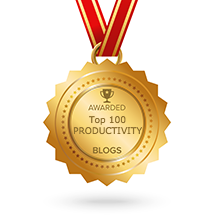What flavor is your leadership style?
I am not a regular coffee drinker, so I contacted my local coffee shop to do additional research on drink variations before completing my article titled Leadership Style in a Coffee Cup. The article is a reflection on gourmet coffee differences as compared to various leadership styles.
Below is a summary of what I learned in the research process thanks to recommendations from others and the help of a knowledgeable barista named Debi. After my experience are questions you may want to ask yourself as a leader in today’s rushed business world.
I had a shot of a highly recommended local version of Cuban Espresso (giant leap for me) once while in Florida. Since it was very strong and made my head feel like it would explode shortly after I finished it, I remember it well. The color was very dark and the flavor somewhat bitter. No amount of sugar could make this sweeter. Believe me I tried! For you coffee fans, please understand I’m not putting down Espresso as a drink - for a tiny shot-size cup it packed quite a buzz! I’m merely saying it is an acquired taste that I do not have the proper palate for. After drinking it, I understood why it was given in small shots as most people probably should only take a little of it at a time. Of course, there were those with either a caffeine addiction that seemed to go to the coffee stand every hour for another. I found out that this drink contains almost three times the caffeine content of regular brewed coffee, which explains my exploding head. Debi told me that Espresso can be brewed and blended with water or milk to make a regular coffee drink – wish I had known this was ok. Debi also let me know that Espresso becomes bitter after 10 seconds of sitting so it should be drank quickly, which may explain my experience.
So these little tidbits made me wonder - as an Espresso leader, how much time does it take for one to become bitter or angry towards employees if their response is not what was desired? What does it take to regulate an Espresso leader’s attitude or actions?
About Cappuccino, Debi told me it is lighter in color than Espresso due to the addition of steamed milk and it is served in a larger size too. It is always served hot and the foam on top acts to help retain the heat so that it stays hotter longer. She also said getting the foam right was what made this coffee drink one of most difficult coffee beverages to make.
In my article, I said this style was between Latte and Espresso, which it is but it is not exactly a 50/50 split. This difficulty level in creation is one reason I related Cappuccino as the leadership style used often in the beginning stages of team-development. Team-building is a hard and long process. It requires much study and patience to get it right. So what does it take to be a Cappuccino leader in today’s work environment? How much empowerment and training are right for each of their work teams? How can this leader get it right and what support structures are necessary for both theirs and the team’s success?
When the conversation between me and Debi turned to Latte, she informed me that it has at least twice the amount of milk of a Cappuccino, the same amount of power-packed caffeine, and will typically have a far lower amount of foam. The drink is very light with a milky coloring and typically is 90% milk with 0-10% foam. It is served warm or cold. Latte comes in a multitude of flavors with iced vanilla the most popular at Debi’s coffee shop. So I tried a vanilla one with ½ shot (baby steps) and it was good enough to make we want to try something with caramel the next time I’m in a coffee shop.
So how does my taste test relate to leadership? Under a Latte leader, can employees handle more power without too much loss of management control? Do the employees under this leadership feel like they have lots of leeway in their work, but not enough leadership at the top?
If you are a leader today, after reading the linked article and this post, please think about the following five questions.
1. What leadership style do you display most often? (Evaluate yourself)
2. Why is that a good or bad style for your business environment? (List Pros/Cons)
3. What leadership style do you want to become more like? (Evaluate styles)
4. Why do you think you need to make this style adaptation? (List Pros/Cons)
5. How and when are you going to start working on revising your style? (Develop action plan)
Please feel free to share comments on the article or this post on this blog. If you have any suggestions to help others move from one style to another or when to choose a particular style, please share that as well.
For common management theories on leadership, search for information on:
- Burn’s Transactional and Transformational Leadership
- Lewin’s Leadership Styles and Research
- House-Podsakoff’s Leadership Styles Model
- Likert’s Management Systems and Styles
Labels:
attitude,
communication,
empowerment,
leadership,
teams
|
Bookmark this post:
|
|
Subscribe to:
Post Comments (Atom)













 This work is licensed under a
This work is licensed under a
No comments:
Post a Comment